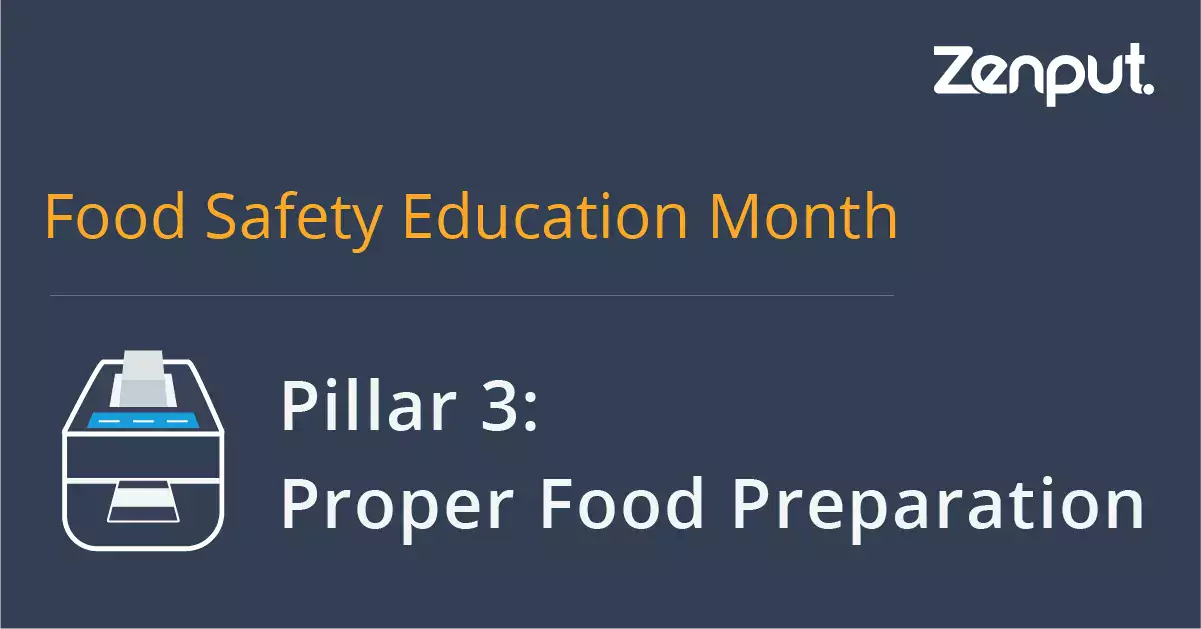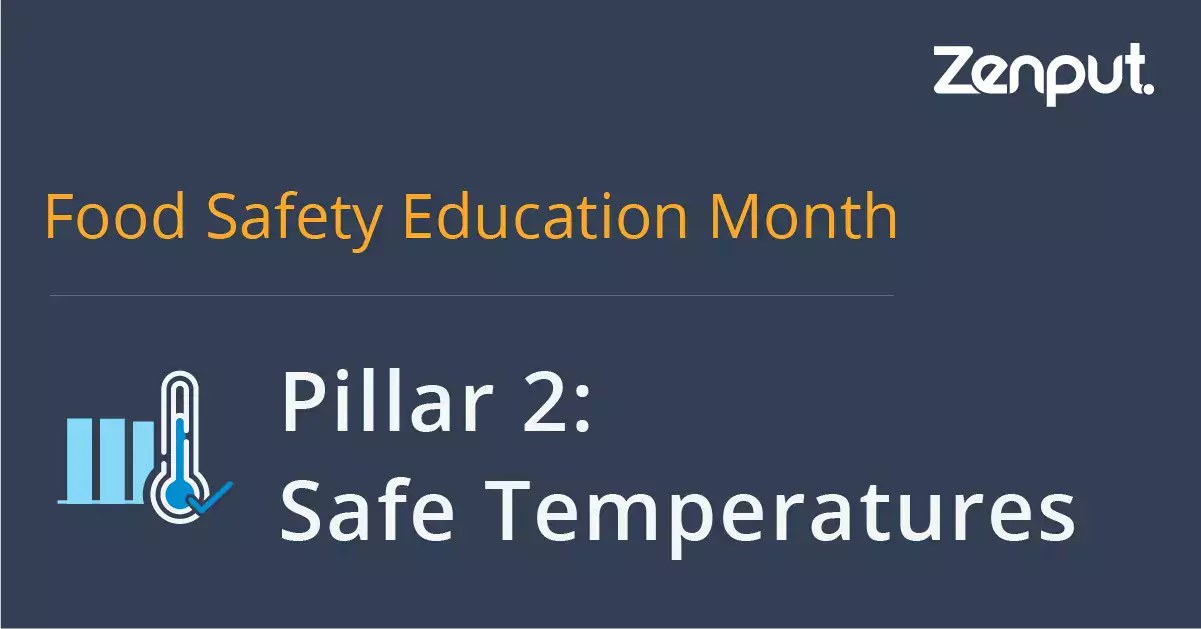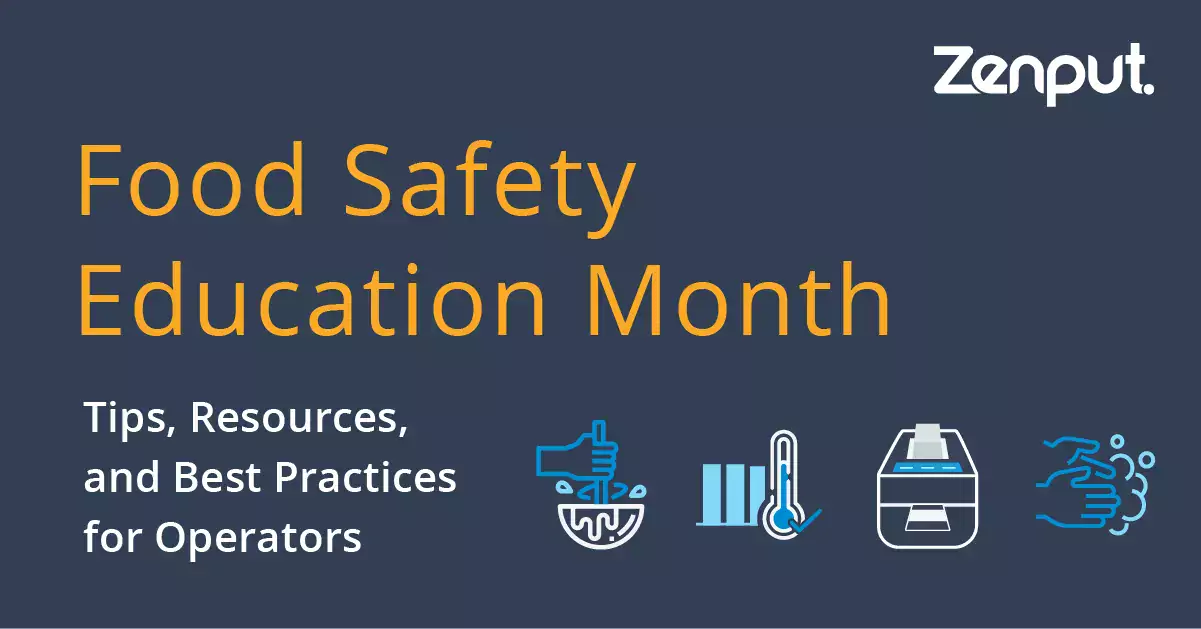The teams that serve, prepare, and handle food in restaurants, grocery stores, and convenience stores manually execute work that is important to the safety of customers. With many food safety processes and items to keep track of, team members can easily miss or poorly execute the necessary health and safety procedures. Staff themselves are at risk if procedures aren’t strictly followed. This makes it essential for every foodservice operator to establish rigorous cleaning programs, maintain sanitization schedules, and implement best practices to prevent foodborne illness and the spread of disease.
Foodborne illnesses are costly and damaging for businesses. If your organization is not focused on making food safety protocols a priority, you could potentially be facing decreased revenues, crippling lawsuits, substantial legal costs, receding loyalty, and a damaged reputation. Food safety is likely the most critical part of the food preparation process and, clearly, a wise investment.
The Food and Drug Administration’s (FDA) 2020 inspection data shows that some of the most common food safety violations among foodservice operators include hazard analysis, pest control, manufacturing controls, and personnel-related violations.
The FDA cited 98 facilities for failing to implement effective pest control measures or for misusing pesticides in a way that could cause potential food contamination. Manufacturing, processing, packing, and holding controls account for 95 out of the 98 food facility citations. Personnel issues (87 citations)—including proper handwashing, cleanliness of washrooms, and sanitization of food contact surfaces—round off the FDA’s top 5 food safety violations for 2020.
Food safety software solutions ensure that the food you handle and produce—from farm to fork— is safe for consumption. In this article, you’ll discover how to implement food safety protocols effectively and efficiently across your operational chain, and how technology is helping to elevate food safety protocols and practices to reduce or eliminate food safety incidents and outbreaks.
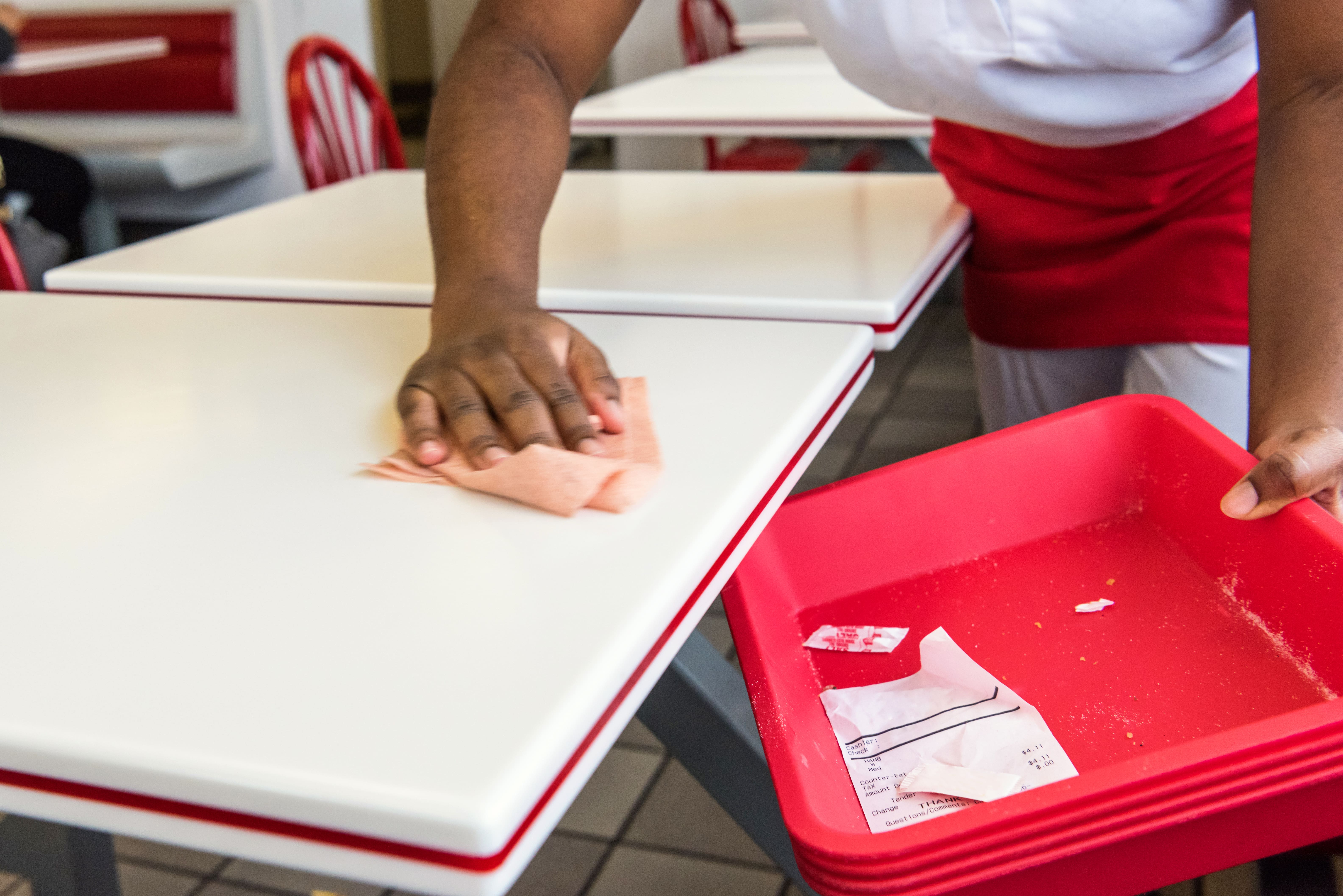
Establish Programs to Ensure Clean Environments
From food preparation and handling to storage and packing, restaurants, convenience stores, and grocery stores have a critically important responsibility to ensure that safety and hygienic standards are being upheld.
Cleaning and sanitization programs comprise a wide range of elements, from the cleaning and disinfecting of equipment to waste management and washroom hygiene. For effective operational food safety protocols, cleaning programs should include the following essentials:
- Waste management: Organic food waste should be separately handled from recyclable and harmful materials to ensure food safety and effectively control pests. Operators should have a system in place for discarding wastewater and oil used during food preparation. Monitoring water used during food preparation should be a regular practice.
- Master cleaning schedules: A master cleaning schedule should encompass all areas and operational equipment in any food service, storage, and preparation facility that needs to be cleaned regularly. This includes utensils, cooking and preparation equipment, storage containers, baskets, walls, floors, drains, refrigerators and freezers, overhead structures, loading docks, warehouse facilities, and lighting. The cleaning schedule must indicate how often each item and area needs to be cleaned. This will vary from hourly or daily to weekly and even quarterly timetables depending on the type of products being handled or manufactured.
- Routine cleaning: Cleaning is an ongoing task in any food-related operation and should include protocols for cleaning spills, leaks, and other hazards. Workers should continuously remove any product that falls from belts or lines, which eliminates a slipping hazard and makes cleaning easier at the end of the shift. Cleaning equipment such as mops and cloths can also pose a risk of cross-contamination and should be routinely disinfected.
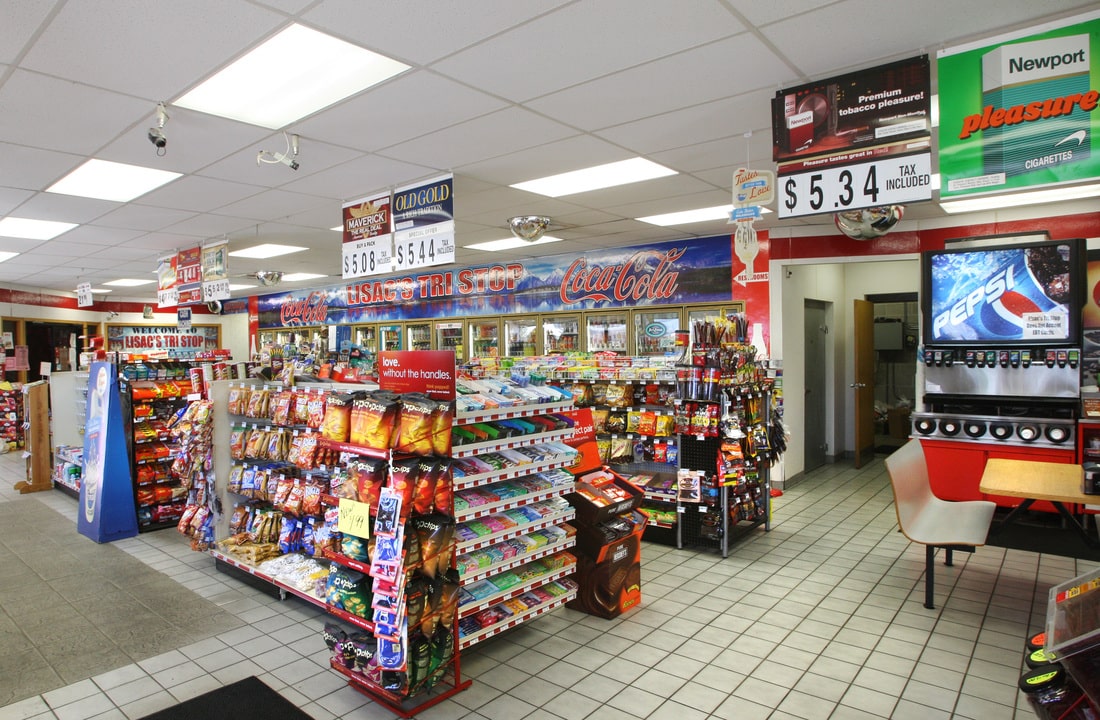
Maintain a Routine Workplace Sanitization Schedule
In addition to educating employees about the importance of proper food safety protocols, implementing a workplace sanitization schedule will create accountability, prevent food safety concerns, and assist with the identification and tracking of issues that emerge. When compiling cleaning or food safety audit checklists for a grocery, convenience store, or restaurant, it is essential to consider even the smallest details. These are the easiest to overlook but could have big consequences.
Hourly Cleaning Sanitization Schedule Recommendations
Hourly cleaning tasks keep high-traffic areas safe, sanitary, and maintain customer appeal. Although not near the kitchen, restroom cleanliness is an important part of maintaining a hygienic facility. Contaminants and germs can very quickly spread if this area is not regularly monitored and sanitized.
Hourly checklists should also be employed for entryways, walkways, trash receptacles, countertops, door handles, self-service areas, and other frequently-touched or high-traffic zones. Routine tasks that require more frequent attention include sanitizing dining areas or tables, check-out counters, and certain food preparation areas or equipment.
Daily Cleaning Tasks
Daily tasks should be scheduled at set intervals, whether once daily, between shifts, or more frequently. These tasks not only maintain a hygienic facility but also prevent maintenance issues and keep costly equipment running optimally.
Coffee maker carafes, grounds bins, beverage dispensers, drip trays, microwave oven interiors and exteriors, condiment dispensers, freezers, ice machines, cold cases, countertop ovens, warmers, and sandwich presses all require regular cleaning. Display windows or barriers should also be cleaned regularly, and equipment should continuously be monitored to ensure operational efficiency.

Following Sanitization Best Practices Beyond the Pandemic
The pandemic has heightened the need for frequent and effective sanitization. In addition to established food safety protocols and schedules, the following COVID-19 prevention best practices should be incorporated into checklists as standard practice:
- Food handlers must use utensils or sanitary gloves when preparing or packing food to avoid contamination
- Frequently disinfect handles, check-out counters, and grocery carts
- Help customers maintain infection control and social distancing by discontinuing self-service operations, displaying social distance markers, and offering sanitizing stations
- Employees should not come to work when sick and should wash or sanitize their hands regularly
- Establish designated grocery or takeout pick-up zones and practice social distancing on food delivery
- Keep packed foods for delivery separated to avoid cross-contamination and routinely sanitize coolers used to deliver foods
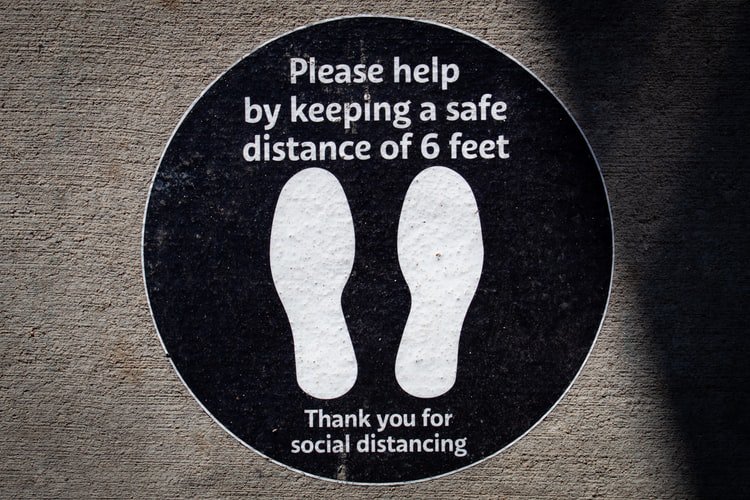
Ensure Food Safety and Clean Environments with Zenput
Inadequate compliance with health and safety regulations could jeopardize not only the health of employees and customers but also business licenses. It is difficult to gain insight into the effectiveness of cleaning, sanitization, and food safety processes when using paper records.
Digitally capturing important data such as compliance photos and temperature readings through mobile food safety audits can save time, reduce administration, and ensure accuracy. Using mobile food safety software solutions allows field managers to gain visibility into multi-location store operations and improves consistency.
Zenput’s digital checklists help staff make immediate corrections to ensure cleanliness standards are met before shifts start and submit real-time hygiene reports. This data helps identify unsatisfactory facilities, improper food handling, and preparation practices.
Multi-unit operators are leveraging Zenput’s innovative platform to digitize and automate food safety protocols and sanitation processes, enhancing customer and employee safety, and avoiding costly mistakes. Learn more about transforming your operations by downloading a free copy of The Operator’s Guide to Food Safety Execution.
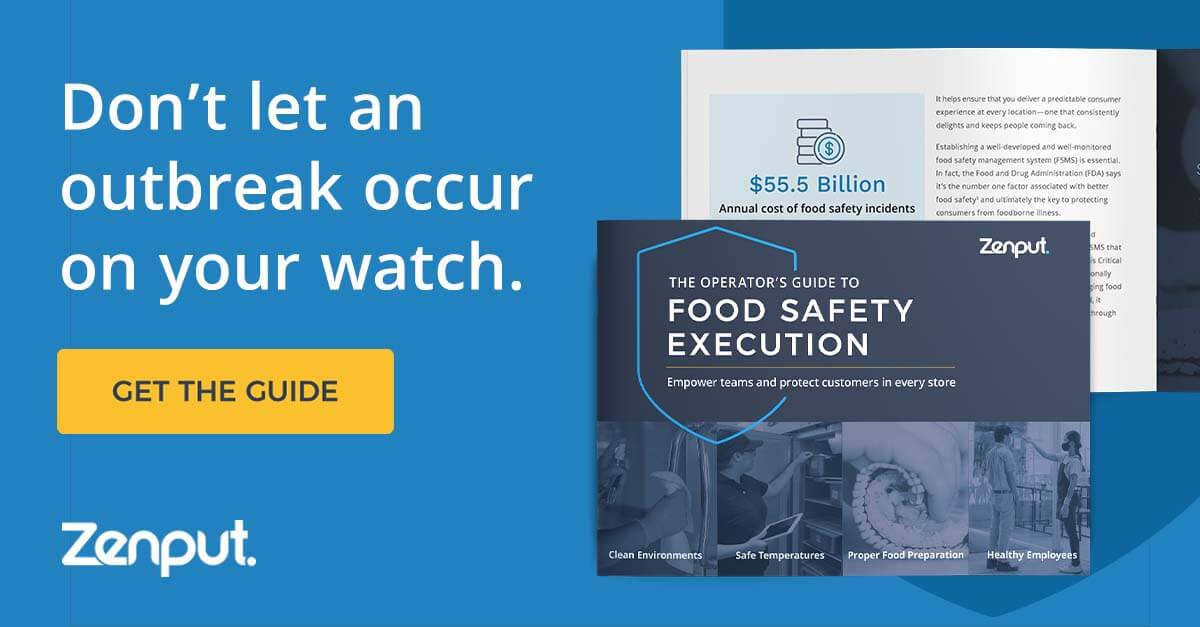
Subscribe to our blog
You are now subscribed!
